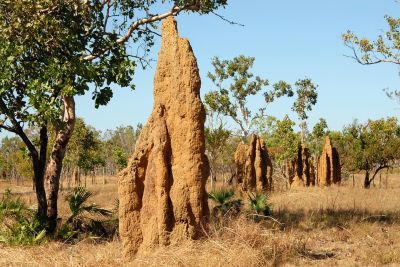Termites, resembling ants in appearance, typically inhabit tropical and subtropical regions. There are approximately 3,000 species of termites, which feed on organic materials such as wood.
Termites, measuring around one to two centimeters in length, reside in towering structures they build from soil, resembling organized cities that can reach heights of up to five meters. Within these miniature cities, specific chambers exist, including a queen chamber, a brood chamber, and a nursery, in addition to a climate control and ventilation system.
Termites demonstrate remarkable cooperation in defense and foraging for sustenance. In termite colonies, the responsibility for the continuation of the queen’s lineage lies with certain individuals, while workers fulfill the needs of the colony, and soldiers are responsible for defense.
Researchers have discovered an extraordinary characteristic of Neocapritermes taracua termites. When the workers of this species lose their ability to gather food due to weakened jaws, they are employed in the colony’s defense. Aging worker termites possess a sac on their backs. When the colony is under attack, the liquid stored in the sacs of the elderly workers is compressed and released, resulting in an explosion. The toxic substance released upon explosion corrodes the areas it comes into contact with.[1]




